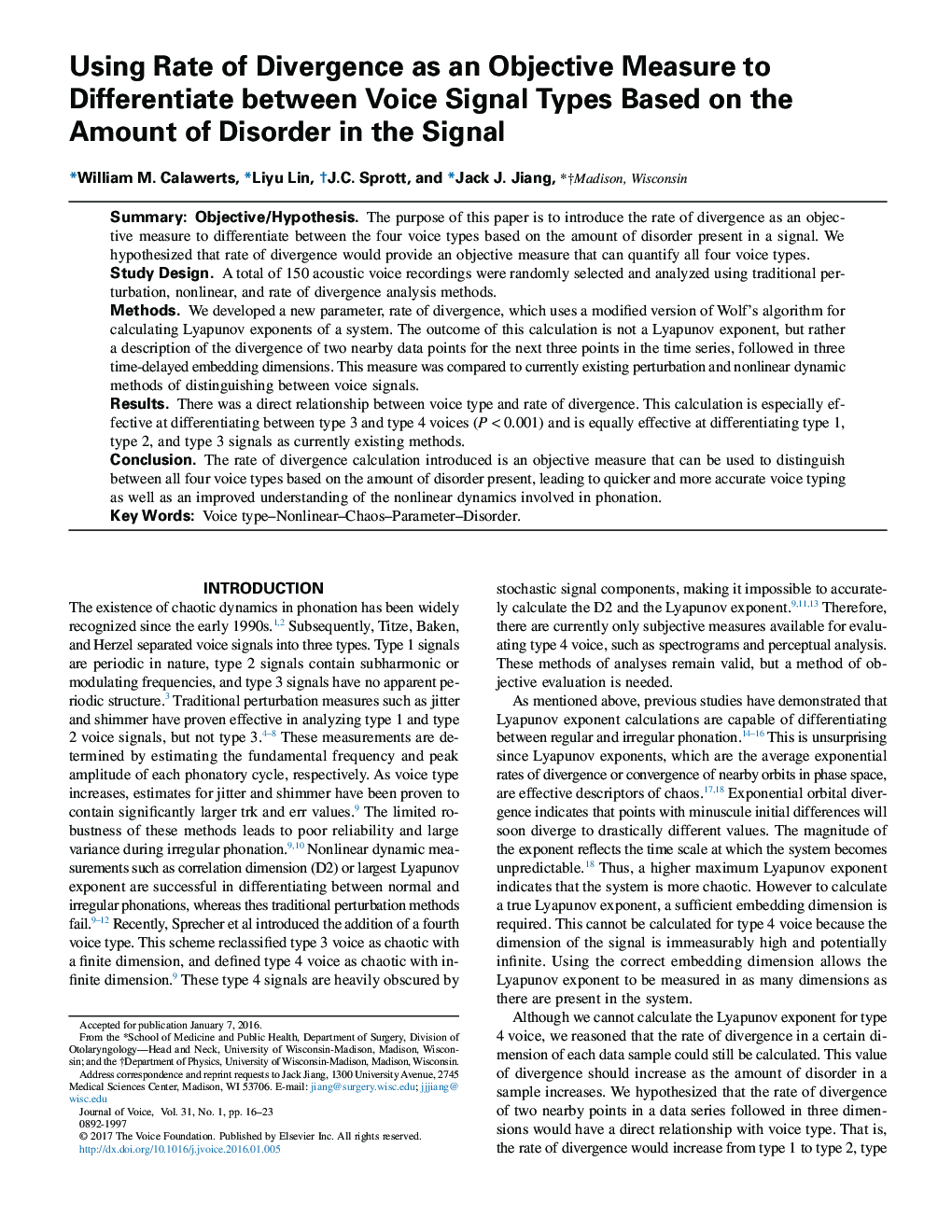| Article ID | Journal | Published Year | Pages | File Type |
|---|---|---|---|---|
| 5124297 | Journal of Voice | 2017 | 8 Pages |
SummaryObjective/HypothesisThe purpose of this paper is to introduce the rate of divergence as an objective measure to differentiate between the four voice types based on the amount of disorder present in a signal. We hypothesized that rate of divergence would provide an objective measure that can quantify all four voice types.Study DesignA total of 150 acoustic voice recordings were randomly selected and analyzed using traditional perturbation, nonlinear, and rate of divergence analysis methods.MethodsWe developed a new parameter, rate of divergence, which uses a modified version of Wolf's algorithm for calculating Lyapunov exponents of a system. The outcome of this calculation is not a Lyapunov exponent, but rather a description of the divergence of two nearby data points for the next three points in the time series, followed in three time-delayed embedding dimensions. This measure was compared to currently existing perturbation and nonlinear dynamic methods of distinguishing between voice signals.ResultsThere was a direct relationship between voice type and rate of divergence. This calculation is especially effective at differentiating between type 3 and type 4 voices (Pâ<â0.001) and is equally effective at differentiating type 1, type 2, and type 3 signals as currently existing methods.ConclusionThe rate of divergence calculation introduced is an objective measure that can be used to distinguish between all four voice types based on the amount of disorder present, leading to quicker and more accurate voice typing as well as an improved understanding of the nonlinear dynamics involved in phonation.
